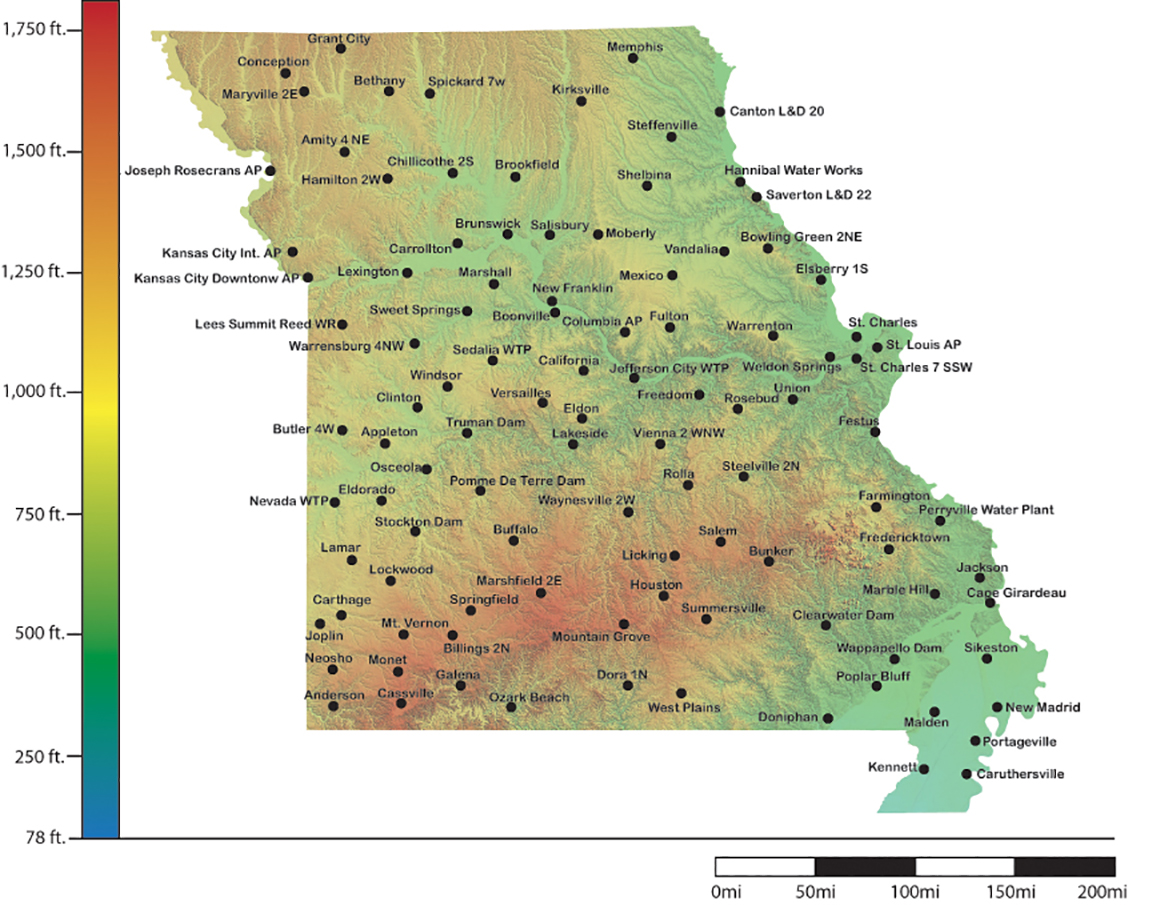Taking an environmentally sensitive approach to pest management
Missouri’s growing season typically runs from April to October and, depending on where you live can make a big difference when to expect your first or last frost. Missouri’s latitudinal variation, the Ozark Plateau, river bottomlands, hills, valleys and populated areas are all factors contributing to frost potential. If you have an established climate record of temperatures for your region, and an idea of how local topography can affect temperature, you can use that knowledge in determining when, on average, to expect your first and last frost.
Typically, the first fall frost (≤ 32°F) occurs over northern and central Missouri by the second and third week of October, respectively. Similarly, the last spring frost occurs over northern and central Missouri by the third and second week of April, respectively. Frosts are more likely to be experienced earlier in the fall or later in the spring over the Ozarks when compared to central Missouri. The reason for this is due to the higher elevation of the Ozark Plateau which causes cooler temperatures in the Ozark region. As the Ozark Plateau transitions to the Southeastern Lowlands of the Bootheel, the average first fall frost generally occurs between the last week of October and the first week of November. Similarly, the average last spring frost varies from the second week of April to the end of March.
Another item to consider is local terrain where temperatures can be highly variable over small distances due to topography. This resource provides a generalized view of expected last spring and first fall frost dates. Minimum temperatures can vary 10°F or higher over a short distance, say, from the bottom of a valley to a nearby hilltop. Cool air, being denser than warm air, moves down the slopes of hills, accumulating in the valleys. This is why low lying areas, such as river bottoms, will likely be colder than their surroundings on clear, calm nights. Therefore, while referring to the data and maps throughout this site, consider your local landscape when determining your average first frost date.
